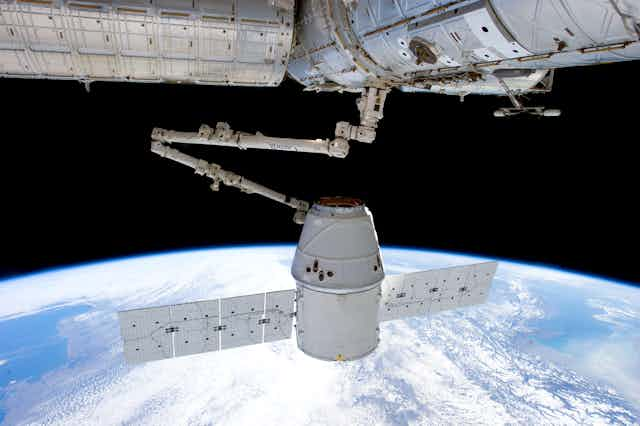It is three years since the final flight of the US space shuttle programme, during which time NASA has had to rely on the Russians, its allies, in space at least, to ferry astronauts and supplies between the International Space Station (ISS) and Earth.
NASA has been the major partner and driving force behind the ISS since it was first proposed after the dissolution of the Soviet Union. When it became apparent that the ageing space shuttle fleet, designed and built in the 1970s, could not be kept in service until a replacement was ready, the US had to rely on the Russian fleet of Soyuz launchers.
Funding cutbacks and technical issues in the US delayed the continuation of its human spaceflight programme that began over 50 years ago. The Space Age, following from the launch of Sputnik in 1957, rapidly transformed into the space race between the US and the Soviet Union, paralleling the Cold War that was simultaneously being waged.
Fortunately, and mainly through the growth of the European Space Agency (ESA), space missions have brought the US and Russia much closer together. That space exploration has remained a mostly collaborative venture despite often disintegrating relationships between nations is one of the most heartening and inspirational aspects of space exploration today.
Unfortunately, idealism has to take a back seat to the reality of budgets and votes. Escalation of the crisis in Ukraine has to some extent moved NASA’s lack of in-house human spaceflight capability up the US political agenda. Now, NASA’s announcement that it has selected two of three competing companies to carry forward development of a seven-seat re-usable flight capsule has again highlighted the shortcomings of NASA’s human spaceflight programme.
The new vehicle is not scheduled to enter service until 2017 at the earliest, leaving NASA reliant on Russian transport for at least three more years. At a cost of around US$70m per astronaut seat, this is an aggravation that the US government could do without.
The selection of the company SpaceX, even though it was awarded less funding than the second company to be chosen, aerospace giant Boeing, is a vote of confidence in this upstart, independent company and its family of Dragon spaceship capsules. SpaceX was established in 2002, with the bold aim to “revolutionise space technology, with the ultimate goal of enabling people to live on other planets”.
SpaceX is certainly achieving the first part of its mission: in 2012, its Falcon 9 rocket carried a Dragon capsule in to space to dock with the ISS – the first private company ever to do so. Since then, two additional flights have been made. The current tranche of NASA funding will take SpaceX even closer to achieving its ultimate goal, as further development of Dragon to carry astronauts is an important step on the path toward human exploration of the solar system.
A second private company, Sierra Nevada Corporation, was also in the running but was dropped by NASA due to budgetary constraints. The company has always maintained that it is not reliant on NASA funding to continue its human spaceflight ambitions, and will pursue development of its Dream Chaser spacecraft.
The significance of NASA’s announcement is not just a renewed commitment to human spaceflight. It is also recognition that the space race is no longer solely a governmental concern. Private companies are equally capable of launching spacecraft into low Earth orbit. It is clear that in the very near future, human spaceflight will also become a commercial enterprise.
This leads to many more questions. Once several companies start to fly into space, who regulates them? Where does government influence stop and private endeavour take over? As NASA starts the next stage of its human spaceflight programme, wider issues than the price of an astronaut’s ticket have to be considered. Further human exploration of space must be preceded by the discussion and creation of appropriate governance, as we must ensure that the all-too-frequent conflicts on Earth are not carried upwards to become conflicts in space.

